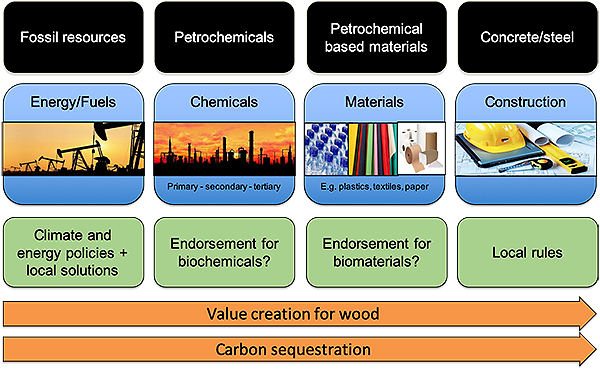
A couple of months ago we spoke in our newsletter about how to set up a bio strategy at either a national or regional level. A biostrategy is an essential tool in ensuring you have a holistic view of the sector. We shared case studies from some of the EU’s more eastern member states like Romania, where NC Partnering CEO Jukka Kantola made a speech in a Sustainable Forestry Seminar as a part of Finlands EU-presidency. Seminar was moderated by associated partner Daniel Paul Dima. A number of major stakeholders were present, and the conference is sure to pave the way for further initiatives in this field. The whole of eastern Europe offers significant future potential and the EU is very interested in seeing progress in the bioeconomy sector.
Finland provides a good example of an efficient bioeconomy. Like other countries it faced a financial crisis in 2007–2008, which forced it to renew its bioeconomy sectors and the country took an active approach in conducting a national bio strategy that was concluded in 2014. While we can’t comment on the success of the initiative as a whole, what we do know for sure is that today Finland’s forestry sector is booming and growing faster than ever. Several biorefineries are in the pipeline and some, like the Metsä Group Äänekoski Bio-product mill, are already completed. The product portfolio is expanding too and there are several projects in the area of textiles like Spinnova and Infinited Fiber Company, and also some in materials including Aalto Cell™ fibers, Paptic material and Sulapac as a biodegradable material. The construction sector has also invested and developed interesting applications such as Grosslam. Meanwhile, we cannot forget biofuels of course which are making progress – as evidenced in the recent announcement by Bio Energo.
We need each of these different projects and there is a good pipeline available.
So what is the picture at global level?
The World Meteorological Organisation (WMO) announced on 25 November, that CO2-levels in the world’s atmosphere are at an all-time high. Levels are increasing faster than ever and measures to address the situation need to be taken immediately.
If we consider the scale of fossil-based vs bio-based applications we all know huge differences. Fossil-based applications still dominate our world and, as WMO Secretary General Petteri Taalas has stated many times, the key to mitigating CO2-emissions is to replace fossil-based feedstock by bio-based solutions. We have the tools to begin this journey – including bio strategies, and we need to start as soon as possible as there is no time to lose.
We were pleased to meet with the OECD in Paris recently to discuss these issues. We both share the view that most regulatory measures relate to feedstock and energy applications and that while we all acknowledge that energy is vital it has already received huge subsidies regardless of whether it is fossil- or bio-based. The key issue however is emissions, and sometimes it might make more sense to burn oil or gas to generate energy and to preserve wood for more valuable applications.
Non-renewable vs. bio-based
Scale difference is huge
- Everyday life is dominated by non-renewable consumables and products
- Bio-based applications still represent a minor share
- Traditional pulp and paper sector is dominated by forest-based applications

Woody biomass is an option
- Prevalence of fossil-based applications is still endorsed by subsidies and regulations
- Regulation is not yet in place to speed-up the transition to bio-based solutions – apart from in the energy sector
- The value of applications increases from energy application to construction and simultaneously carbon will be stored – for decades or even longer
- In most cases bio-based solutions are also biodegradable

Most of the measures endorsing bioeconomy are in the area of energy. We made an open proposal to OECD to make impact assesment on current status on selected sectors in terms of social, economical and environmental impacts. Starting point could be as it – status followed by sensitivity analysis on different scenarios, where share of bio-based application could be increased on different levels e.g. 5%, 10% and 20%. We think this could help regulators to have better understanding on potential impacts on regulative measures. Currently such simulation models do not exist.
Source
NC Partnering Newsletter 11/2019, 2019-12-05.
Supplier
Aalto University
Bio Energo W. Lohmann GmbH
Infinited Fiber Company
Metsä Group
NC Partnering Ltd
Organisation for Economic Cooperation and Development (OECD)
Paptic Ltd
Spinnova
Sulapac Ltd.
World Meteorological Organisation (WMO)
Share
Renewable Carbon News – Daily Newsletter
Subscribe to our daily email newsletter – the world's leading newsletter on renewable materials and chemicals










